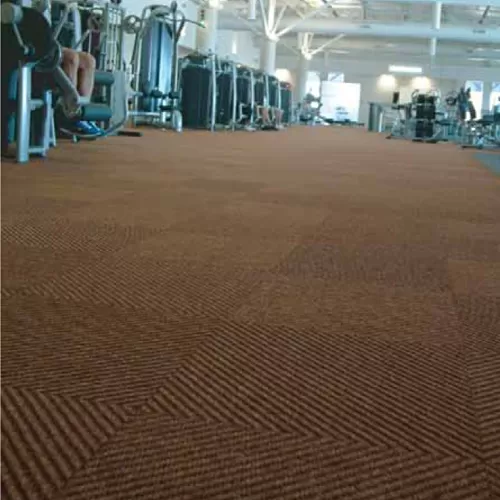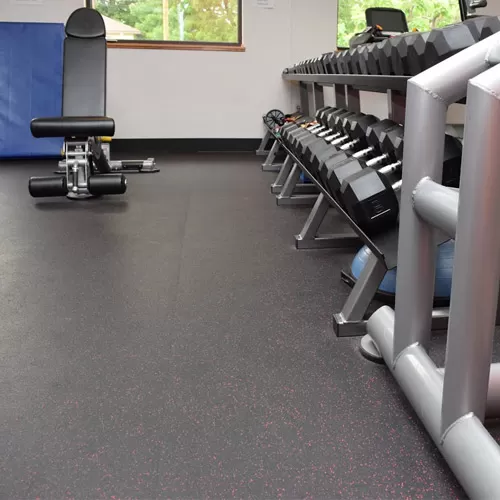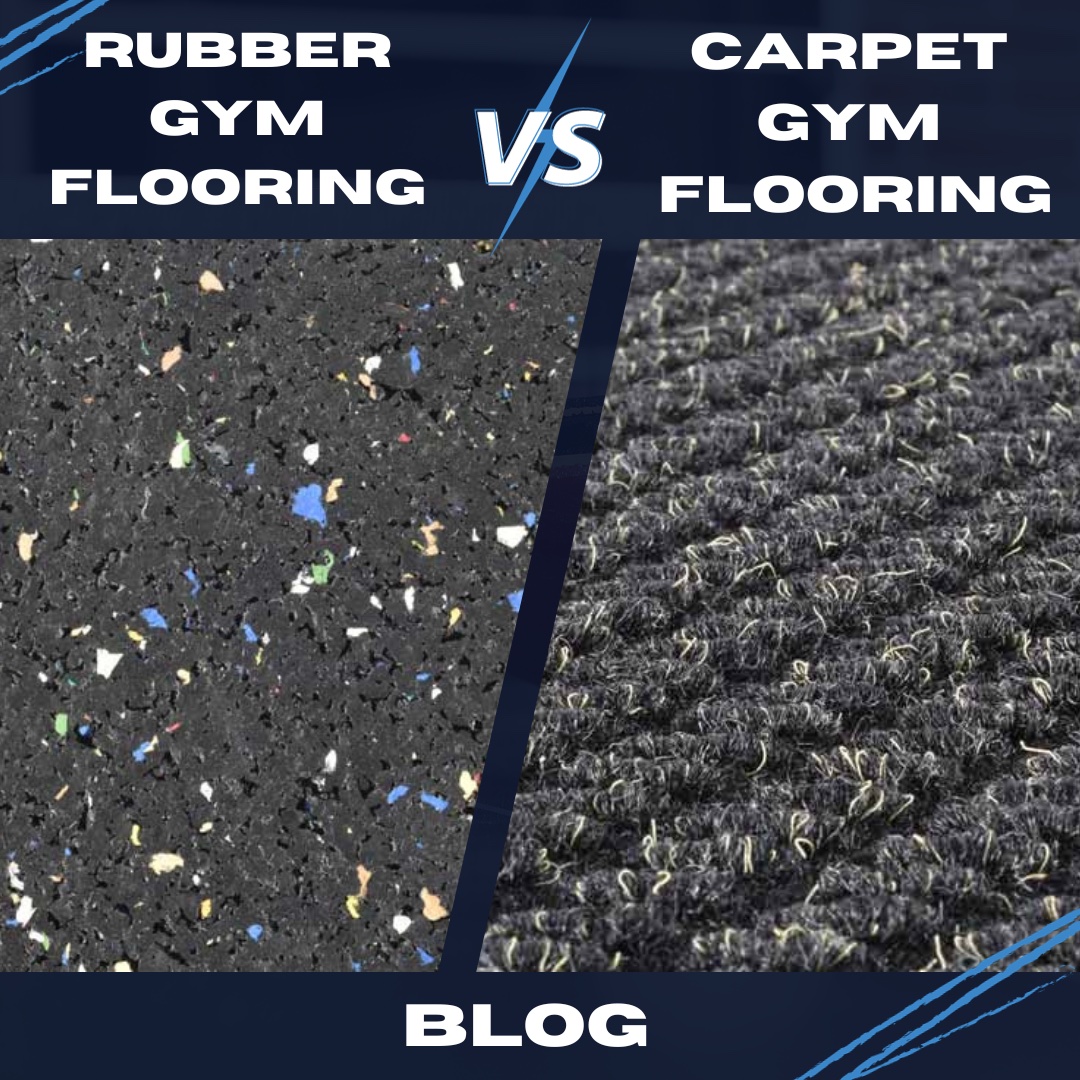Gym Carpet Flooring vs. Rubber Gym Flooring
Related Product: Z Rubber Flooring Roll Geneva 1/4 Inch Regrind Per SF - Disc
Pros and Cons of Gym Carpet Flooring and Rubber Gym Flooring
Both carpet and rubber gym flooring have distinct advantages, but there are also some downsides that you’ll need to consider with each flooring type.Gym Carpet Flooring Pros and Cons
Pros: Carpet for gym floors tends to have a warmer feel to it, which can make your gym more comfortable and welcoming. You’ll find carpet for gyms is usually available in multiple colors, which allows you to choose colors that match your gym’s decor or your business branding. When you use gym carpet tiles, you can replace a single tile if it’s damaged, rather than having to replace an entire section or room of carpeting. Plus, gym carpet squares are easy to install, so you can quickly start using the space again.

Cons: But there are some downsides to using gym floor carpet in your space. Sweat dripping down onto the carpet is unhygienic, and carpeting lacks some of the cushion that you would get with a rubber floor. Carpet can’t absorb the impact of dropped weights, so it can only be used in limited areas of your gym. Plus, skates or cleats can damage carpet, so it’s important to strategically install it in certain areas where people are using appropriate footwear.
Rubber Gym Flooring Pros and Cons
Pros: Rubber gym flooring is a popular choice because of its overall strength and durability. This flooring can withstand significant foot traffic and wear and tear, maximizing your investment in your gym. Rubber is available in multiple thicknesses and sizes, and it’s capable of absorbing both impact and sound. By choosing a thicker rubber product, you can protect your subfloor against the impact of dropped weights.

You’ll find lots of options when you choose rubber flooring, too. It’s available as tiles, roles, and mats, so you’ll have plenty of product choices and size options. You can also choose from several color options, including color-fleck designs that can add visual interest to your gym.
Cons: While there are many benefits to rubber, it’s cold, so it doesn’t make for the most welcoming flooring for your gym. While mats can be dry-laid, large rubber rolls need to be installed with adhesive, so replacing a rubber floor isn’t as simple as replacing a single carpet tile. The installation process is more involved and is best performed by a professional, but keep in mind that since rubber is so durable, chances are that your installation needs will be very occasional.
Making the Switch From Gym Carpet to Rubber Flooring
Since rubber offers so many benefits compared to carpet, many of our customers call us wanting to remove their carpet tiles and replace them with rubber tiles.How to Remove Gym Floor Carpet Tiles
If you have glued down carpet tiles in your gym, the following steps can help you to remove them:
- Choose a tool, such as a D-handle flat spade.
- Press the tool under the tile at a low, sharp angle, using repeated, strong pressure to lift the tile up.
- Once you get most of the tile up, you can likely pull it up by hand.
- Use a scraper or the edge of a shovel to remove any remaining adhesive from the subfloor.
Getting the first tile started is the most difficult part. Once you have one tile up, the others will be easier to remove. If you’re having a hard time getting started, try jamming a flathead screwdriver under the tile to lift the edges.
The following steps can help you remove self-stick carpet tiles:
- Press a floor scraper against the seam between the tiles and tap on the scraper with a hammer.
- Pop up the first tile. If the tile doesn’t come up easily, you can shove a flat bar under the tile and work it back and forth until the tile pops up.
- Clean the subfloor to prepare it for a new tile.
How to Install Rubber Gym Flooring
Once your old carpet tiles are removed, you can install your rubber flooring. The exact installation method will depend on the type of flooring you’re using.
To install rolled rubber:
- Clean your subfloor.
- Cut the roll ends so that the material is square.
- Start at one end of the room in a wall-to-wall application and work your way to the other end of the room.
- Roll the next roll beside the first one and cut accordingly, measuring the distance between the wall and the end of the last roll you applied.
- Draw a line with the straight edge and run the utility knife along the straight edge.
- Apply double-sided tape along the perimeter of the room and at the seams.
To install interlocking rubber tiles:
- Begin in the center of the room and work your way out to the edges.
- Once you reach the wall and can’t fit another full tile, measure the distance between the wall and the already laid tiles, subtracting ⅛ to ¼ inch for expansion. Mark that distance on the tile to cut, and line up a straight edge along the mark.
- Follow the straight edge with a sharp utility knife and make a series of shallow scores to gradually cut through the tile.
- Push the tiles into place.
